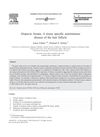Combination Therapy With Oral PUVA and Corticosteroid for Recalcitrant Alopecia Areata
March 2009
in “
Archives of dermatological research
”
TLDR The combination of oral PUVA and corticosteroids helps regrow hair in severe alopecia areata.
The study investigated the effectiveness of a combination therapy using oral corticosteroids and oral PUVA for treating severe alopecia areata (AA), specifically alopecia totalis (AT) and alopecia universalis (AU). Patients received 20 mg/day of corticosteroids and whole-body UVA irradiation 2 hours after taking methoxsalen for 1 month. All patients experienced regrowth of terminal hair on the scalp within 2 months, although two patients relapsed 3 months post-treatment. The therapy increased the population of regulatory T cells (Tregs) and decreased the number of infiltrating cells in the skin lesions, suggesting an immune-modulating effect that contributed to the improvement of recalcitrant AA.

